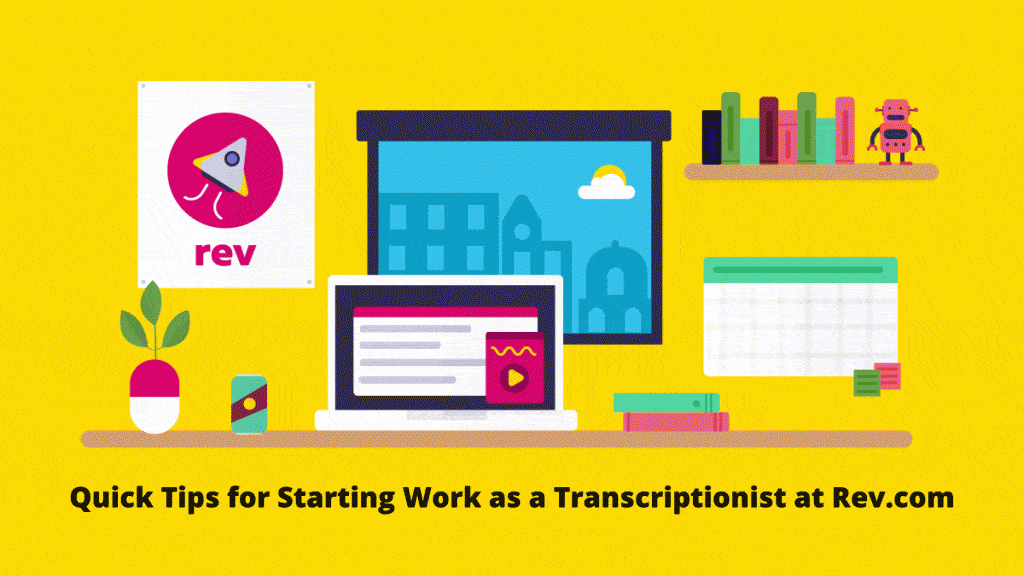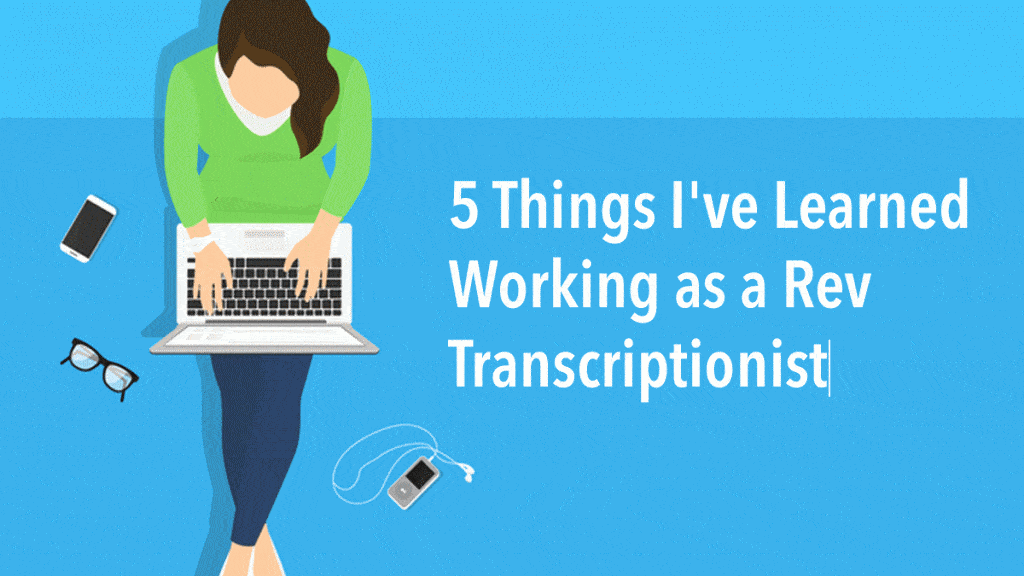What’s the Difference Between Working as a Freelance Transcriptionist and Captioner at Rev?
If you're an applicant considering a freelance opportunity with Rev, here's what you need to know about transcription and captioning.

They are questions we hear often: when freelancing with Rev, what’s the difference between transcription and captioning? Can I do both? What are the pros and cons?
Great questions and ones I’ll address here. First, a bit of background: I started transcribing with Rev in 2015 and about six months later after gaining grading privileges, I also started captioning for Rev. Only about 5% of Rev agents do both captioning and transcription.
Currently, Rev boasts about 10,000 active transcriptionists and about 3,000 active captioners on a monthly basis. If you’re an applicant considering a freelance opportunity or if you’re an agent who is curious about joining another Rev team, here’s (nearly) everything you need to know about transcription versus captioning.
Let’s Start with the End in Mind
Freelance transcriptionists use Rev’s browser-based software to capture all audible English speech. Clients receive an interactive version of this transcript that can be downloaded into other formats, like PDF, .txt, and MS Word.
There are three types of transcription jobs: verbatim, default, and dictations. With verbatim jobs, you transcribe exactly what’s heard, including filler words, stutters, repetitions, active-listening interjections (mm-hmm, yeah, right) and laughter. With default jobs, you would omit speech disfluencies, quick active-listening interjections and laughter. Most of Rev’s transcription jobs are default. With dictations, you would follow instructions when possible, rather than transcribe the words “new paragraph,” “comma,” “period,” et cetera.
Freelance Captioners also use Rev’s proprietary browser-based software, capturing English speech, atmospherics, music and lyrics and also syncing captions to the audio. Clients receive an SRT file.
In each workspace, agents may preview and choose which file to work on.
Here’s an Overview:

Transcriptionists capture English-language speech. If crew members are chatting, you would capture their dialogue. If Alexa or Siri are speaking, you would capture them too. You would also use appropriate notation tags for foreign language, crosstalk and inaudible speech. Files include interviews, focus groups, lectures, and news programs. File lengths vary from a few seconds to over two hours.
The aim of captioning is to recreate the full audio experience for non-hearing viewers. Captioners capture spoken and sung English and use adjectives to describe mood music, i.e., (bright piano music), and use active verbs to describe atmospherics, i.e., (sings in foreign language). Most videos are for commercial viewing, so sound quality is often clear, and captioners work on files which include movies, documentaries, concerts, animated shorts, comedies, and lectures. File lengths vary from a few seconds to a few hours.
Side-By-Side Example
Let's say you were tasked to caption a video of an airplane taking off with a few speakers. As a captioner, you would describe the airplane engine sound and mood music and create hard breaks before conjunctions and prepositional phrases and also indicate new speakers and speaker changes with a dash and speaker ID if needed. For best reading rate, no caption group may be longer than 60 characters.
The captions would begin like this:
(airplane engine roaring)
(bouncy music)
– Really just stumbled on them through a website
where they post medical transcription jobs
and this other company was out there saying:
Hey, we’re looking for transcriptionists.
As a captioner, you’re required to accurately sync captions to the audio. Rev’s online editor allows you to see captions pop up in real time. Captioners also flip captions to the top of the screen to avoid overlapping with on-screen burned-in text.
As a transcriptionist, you would ignore the atmospherics and capture the English speech heard, creating paragraphs at natural points.
Let’s Address a Few FAQs:
Can I work on more than one file at a time?
You may work on one transcription or captioning file at a time. Rev recommends working on files in which you’re comfortable with the accents and terminology.
Which pays more: Captioning or transcription?
Captioning files pay a bit more, starting at about 54 cents per minute while transcription files start at about 45 cents per minute. Keep in mind with captions there is an additional syncing step and longer deadlines. If you enjoy straightforward typing, you may prefer transcription.
Is it worth it being on both the transcription and captioning teams?
In my experience, yes, especially if you’re at Revver+ status (maintaining high metrics and capturing a high volume of minutes). Revver+ agents have first dibs on all new jobs. During slow periods, such as around U.S. holidays, dual agents have access to more files from both workspaces.
What do I need to apply?
You’ll need a computer with a keyboard, headset, broadband internet, and strong English skills. Rev provides training videos and access to its proprietary editing software, which is optimized on Google Chrome and Mozilla Firefox. Foot pedals are optional. Each team has its own application process and style guide.
How do I get paid?
You will need a PayPal account to receive payments. Payouts are made weekly on Mondays for work completed the week prior. The price shown when you claim a file is the amount you will be paid.
May I reapply if I don’t pass the first time?
Applicants may retake the transcription test after 45 days. Applicant re-testing is not currently permitted in captioning. Captions must be FCC and ADA compliant, so there’s a high threshold that captioners must meet.
An Invitation
If you appreciate flexibility and the freedom of working from home, I invite you to explore freelance and side hustle opportunities with Rev. There’s no ceiling on earnings; you are welcome to work as much or as little as you prefer. Approval and activation times vary depending on Rev’s workload. And if you’re already a Rev agent, consider applying for another team. Best of luck!













